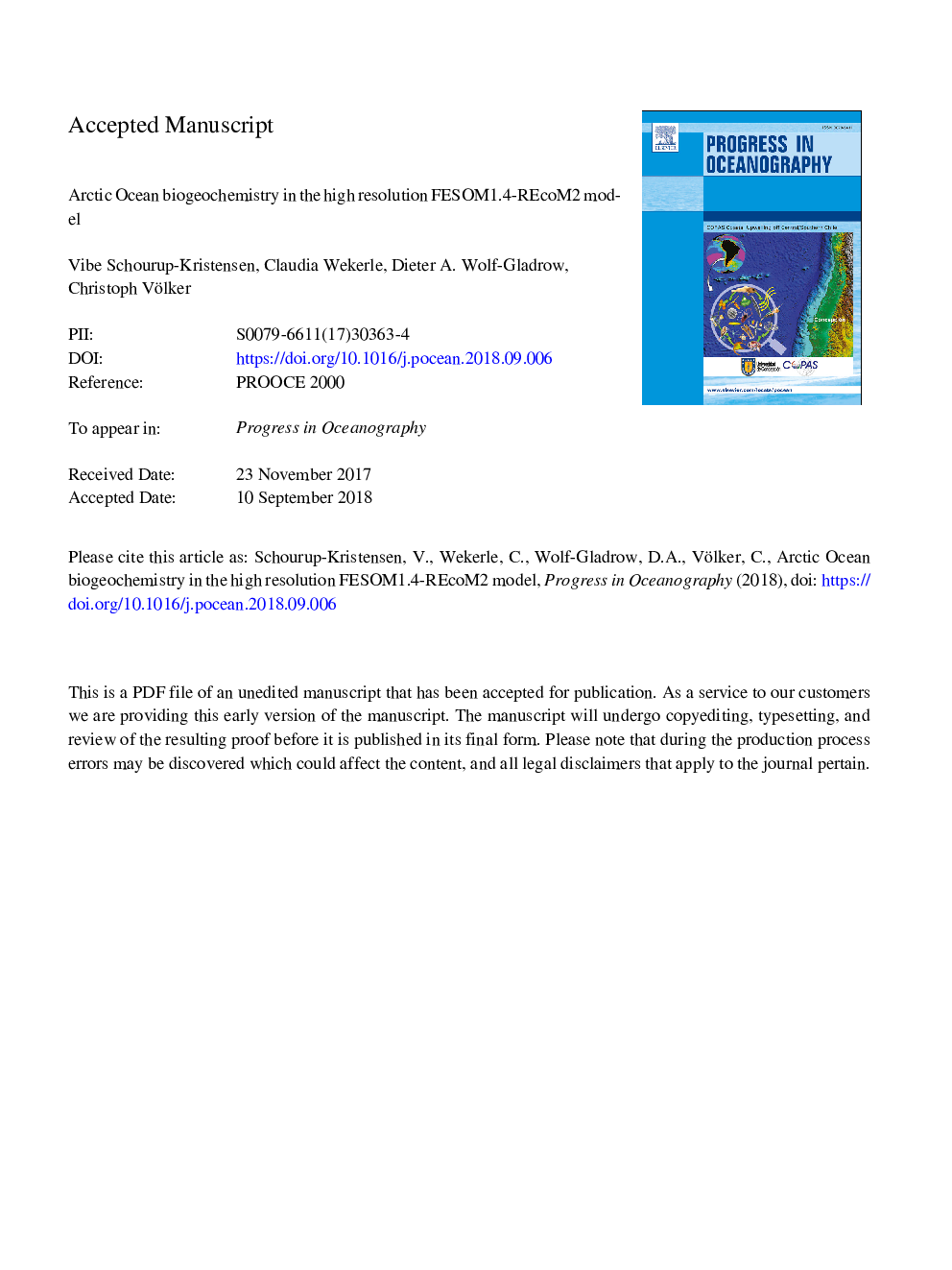| کد مقاله | کد نشریه | سال انتشار | مقاله انگلیسی | نسخه تمام متن |
|---|---|---|---|---|
| 10223941 | 1701065 | 2018 | 66 صفحه PDF | دانلود رایگان |
عنوان انگلیسی مقاله ISI
Arctic Ocean biogeochemistry in the high resolution FESOM 1.4-REcoM2 model
دانلود مقاله + سفارش ترجمه
دانلود مقاله ISI انگلیسی
رایگان برای ایرانیان
موضوعات مرتبط
مهندسی و علوم پایه
علوم زمین و سیارات
زمین شناسی
پیش نمایش صفحه اول مقاله

چکیده انگلیسی
In the rapidly changing Arctic Ocean, marine primary productivity is tightly linked to the balance between light and nutrient limitation. To capture this balance in ocean general circulation biogeochemical models (OGCBMs), a good representation of the physics is important due to the tight bio-physical coupling in the Arctic. Using a horizontal model resolution of a few kilometers makes it possible to resolve an increasing number of small scale processes, that otherwise need to be parameterized in OGCBMs. Such high resolution is, however, commonly not possible due to computational constrains. Utilizing an unstructured mesh approach, we have run the finite element sea-ice ocean model (FESOM 1.4) coupled to the biogeochemical model REcoM2 in a global configuration with an Arctic-wide resolution of 4.5â¯km. This resolution is so far unprecedented for a global biogeochemical setup, and here we present an analysis of the mean state of the model. FESOM-REcoM2's integrated Arctic net primary production (NPP) averages 445â¯Tg C yrâ1 for the years 2011 to 2015, a value that is in the middle of the range compared to estimates from the literature. Most production takes place in the inflow regions of the Nordic and Chukchi Seas, and 32% is associated with the sea ice zone, the latter including the marginal ice zone and below-ice productivity. Light limits production to some degree at all latitudes north of 60°N, with growth becoming nutrient limited following the initial spring bloom in most places. The model reproduces the relatively low surface concentration of dissolved inorganic nitrogen (DIN) that has been observed in the central Arctic Ocean, as well as the low surface DIN concentration towards the end of the growth season further to the south, thereby also capturing widespread subsurface chlorophyll maxima (SCM). The SCMs are found in the whole Arctic except for the areas where sea ice concentration is high the whole year. They have a duration of two weeks to five months. The balance between nutrient and light limitations, both in the vertical and horizontal direction, highlights that decreased light limitation in a future ice free Arctic Ocean will not necessarily induce an increase in NPP due to increasing nutrient limitation, and that further studies of the role of the SCMs are required.
ناشر
Database: Elsevier - ScienceDirect (ساینس دایرکت)
Journal: Progress in Oceanography - Volume 168, November 2018, Pages 65-81
Journal: Progress in Oceanography - Volume 168, November 2018, Pages 65-81
نویسندگان
Vibe Schourup-Kristensen, Claudia Wekerle, Dieter A. Wolf-Gladrow, Christoph Völker,